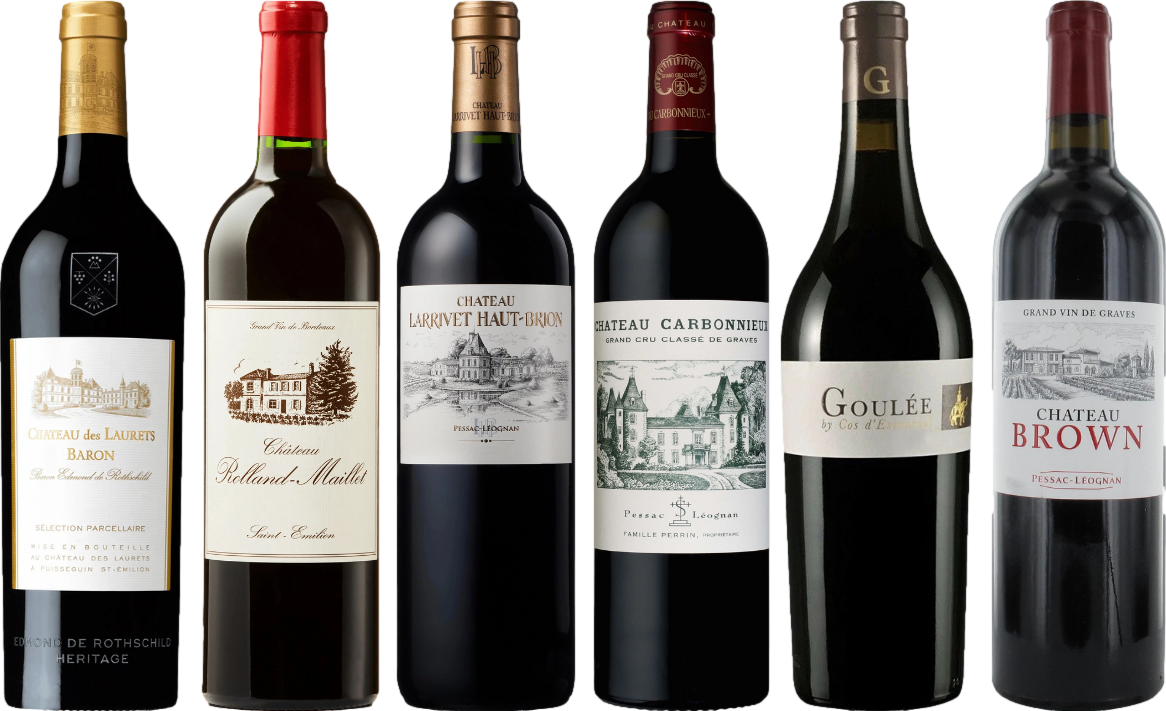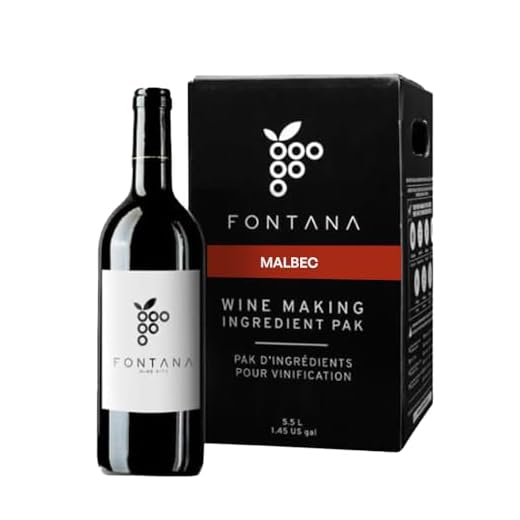



If you’re seeking a standout option, consider a bottle of Cabernet Sauvignon from Napa Valley. This varietal consistently showcases rich flavors of dark fruits, balanced acidity, and velvety tannins, making it a favorite among enthusiasts and novices alike.
For an exceptional experience, I recommend exploring a Malbec from Argentina. Known for its deep color and robust profile, this wine typically offers notes of plum, blackberry, and a hint of spice, perfectly complementing grilled meats and hearty dishes.
Another noteworthy selection is Pinot Noir from Oregon’s Willamette Valley. Renowned for its elegance, this option presents a bouquet of red berries, earthiness, and subtle floral hints, ideal for pairing with lighter fare like salmon or roasted vegetables.
In addition, don’t overlook Syrah from the Rhône Valley, which delivers a bold and complex character with flavors of black fruit, pepper, and smoky undertones, making it a versatile choice for various culinary pairings.
Embrace the opportunity to explore these remarkable options, and you’ll discover that each bottle has a unique story to tell, enhancing both your palate and dining experiences.
Top Varietals of Red Wine in 2023
Cabernet Sauvignon stands out with its bold character and complex flavor profile. This varietal, often described as having notes of blackcurrant, cedar, and spice, pairs seamlessly with grilled meats and rich sauces. Look for options from Napa Valley or Bordeaux for an exceptional experience.
Merlot
Merlot is celebrated for its smooth texture and fruit-forward style. With flavors of plum, cherry, and chocolate, this grape is versatile for food pairings, especially with roasted meats and pasta dishes. Explore selections from California or Right Bank Bordeaux for quality bottles.
Pinot Noir
Pinot Noir captivates with its elegance and finesse. Characterized by notes of red berries, earthiness, and subtle floral hints, it complements dishes like duck and salmon beautifully. Burgundy remains the benchmark, but Oregon and New Zealand are producing remarkable examples worth trying.
Factors Influencing Wine Popularity
Consumer preferences significantly shape trends in grape varietals. The rise of social media has accelerated this process, allowing enthusiasts to share their experiences and recommendations instantly. Engaging visuals and stories can elevate a bottle’s appeal, drawing attention to lesser-known producers or unique regions.
Quality and Value
Affordability combined with quality is a driving force. Shoppers seek excellent taste without overspending. This balance has led to the increased popularity of specific regions known for producing value-oriented offerings. For example, wines from regions like Chile and Portugal often provide exceptional quality at lower price points.
Food Pairing and Versatility
Pairing capabilities also affect choices. Wines that complement a wide range of foods tend to gain traction. For instance, versatile options that harmonize with various cuisines attract broader audiences. Understanding how flavors interact can help in recommending bottles that enhance dining experiences, leading to increased sales and appreciation.
Best Regions for Popular Red Wines
California’s Napa Valley stands out for its exceptional Cabernet Sauvignon, known for rich flavors and bold tannins. This area consistently produces high-quality vintages that attract global attention.
France’s Bordeaux region remains a classic choice, celebrated for its Merlot and Cabernet blends. The unique terroir contributes to complex profiles, making them highly sought after by enthusiasts and collectors alike.
Italy’s Tuscany is renowned for Sangiovese, particularly in Chianti. The combination of sun-soaked hills and ancient winemaking traditions results in vibrant acidity and earthy notes, perfect for food pairing.
Spain’s Rioja, with its Tempranillo, offers a delightful expression of oak aging, providing depth and character. These wines are often approachable yet capable of aging gracefully.
Australia, particularly the Barossa Valley, is famous for Shiraz, delivering bold, fruit-forward wines with spicy undertones. This region showcases a distinctive style that resonates with many wine lovers.
Argentina’s Mendoza has gained prominence for Malbec, offering a blend of dark fruit and velvety texture. Altitude and climate play a significant role in crafting these expressive bottles.
Oregon’s Willamette Valley is becoming increasingly recognized for its Pinot Noir. The cool climate fosters elegant wines with bright acidity, showcasing a different facet of this beloved varietal.
Each region brings its unique flair, ensuring a diverse selection for all tastes. Exploring these areas can lead to discovering extraordinary bottles that elevate any dining experience.
Food Pairings for Popular Red Wines
For a delightful experience with Cabernet Sauvignon, pair it with grilled ribeye steak. The robust flavors of the meat complement the wine’s tannins, creating a perfect balance. A side of roasted vegetables enhances the meal further.
Merlot is an excellent match for a classic margherita pizza. The wine’s fruitiness harmonizes with the tomato and mozzarella, making each bite a treat. Add fresh basil for an aromatic boost.
Syrah thrives alongside barbecue dishes. The smoky notes of grilled meats, such as pulled pork or beef brisket, bring out the wine’s rich, spicy character. A tangy barbecue sauce can intensify the pairing.
Pinot Noir works splendidly with salmon. The wine’s acidity cuts through the richness of the fish, while the flavors of earthiness enhance the dish. Serve with a side of sautéed asparagus for a well-rounded meal.
For Zinfandel, think about pairing it with spicy Mexican cuisine. Dishes like carne asada or enchiladas resonate well with the wine’s fruit-forward profile. The heat from the spices is mellowed by Zinfandel’s sweetness.
Don’t forget about cleaning up after your meal. A good choice would be to invest in the best scrubber for washing dishes to make the process easier.
How to Choose a Popular Red Wine for Events
For events, selecting a captivating varietal involves a few strategic steps. Start by considering your audience’s preferences. Familiarize yourself with trending selections, such as Cabernet Sauvignon or Pinot Noir, which consistently appeal to many palates.
Next, take inventory of your menu. Pairing is key; for instance, a robust Malbec complements grilled meats, while a lighter Grenache is ideal for vegetarian dishes. Here’s a quick checklist:
- Assess the food served.
- Consider the season–chilled options for summer events.
- Keep a range of price points in mind for diverse budgets.
Don’t overlook the significance of sourcing. Wines from renowned regions often come with a reputation that can elevate your event’s status. Focus on regions like Napa Valley or Bordeaux for established favorites. Additionally, explore lesser-known locales like Chile or South Africa for unique offerings that might intrigue your guests.
Lastly, ensure you have a variety of choices. A well-rounded selection can include:
- A full-bodied option.
- A medium-bodied varietal.
- A fruity selection.
By carefully curating your selections based on these guidelines, you’ll create an unforgettable experience for your guests. Enjoy the process of discovery–it’s part of the joy of serving great options!
Trends in Red Wine Consumption
As of 2023, a significant shift towards organic and biodynamic varieties has emerged. Consumers are increasingly prioritizing sustainability, leading to a rise in interest for wines produced with minimal intervention. This trend is driven by a desire for healthier options and environmental consciousness.
Online wine sales have surged, with e-commerce platforms becoming primary sources for purchasing. Direct-to-consumer models are thriving, allowing enthusiasts to explore niche producers and unique blends outside traditional retail channels.
Social media plays a crucial role in shaping preferences. Visual platforms like Instagram influence choices, with consumers seeking aesthetically pleasing bottles and labels, driving interest in artisanal and boutique selections.
Increased travel opportunities post-pandemic have sparked curiosity about regional specialties. Wine tourism is booming, with enthusiasts eager to visit vineyards and participate in tastings, thereby deepening their appreciation for local varietals.
Lastly, the integration of technology in wine education has gained traction. Apps and online courses provide insights into tasting notes, food pairings, and cellar management, empowering consumers to make informed decisions about their selections.









